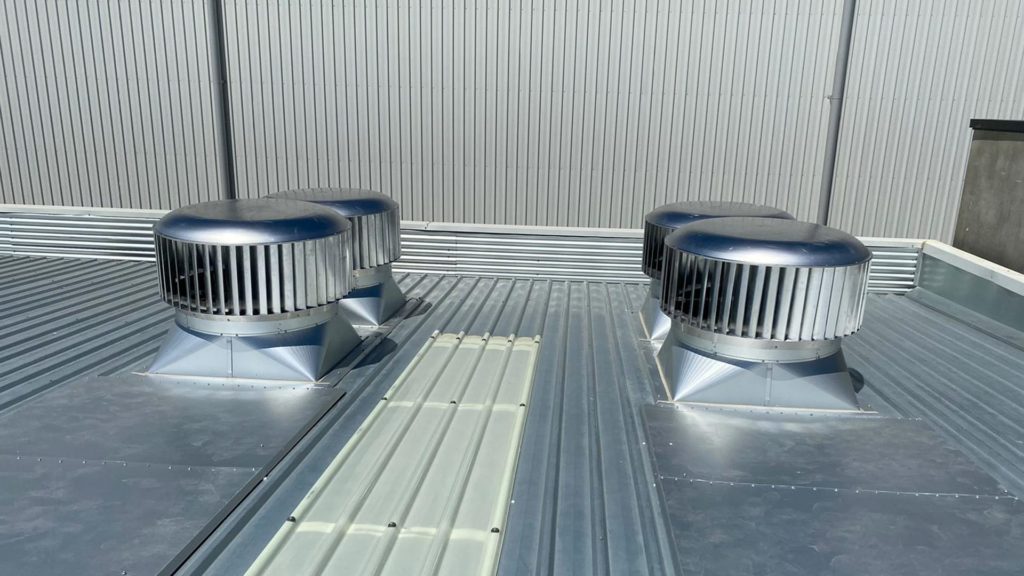Exploring Energy-Efficient Options for Commercial Roof Ventilation
Introduction
When it comes to commercial buildings, energy efficiency is a top priority for both cost savings and environmental sustainability. One often overlooked aspect of a building’s energy efficiency is its ventilation system, particularly the roof vents. Proper ventilation is essential for maintaining a comfortable indoor environment and ensuring the longevity of the building’s structure. In this article, we will delve into the world of commercial roof vents and explore energy-efficient options that can help businesses reduce energy consumption, lower utility bills, and contribute to a greener future.
The Importance of Roof Ventilation
Roof ventilation is a critical component of any commercial building, regardless of its size or purpose. It plays a pivotal role in maintaining a comfortable indoor temperature, preventing moisture buildup, and ensuring air quality. Here are some key reasons why roof ventilation matters:
- Temperature Regulation: Efficient roof ventilation helps regulate indoor temperatures by expelling hot air in the summer and preventing heat loss during the winter. This can significantly reduce the need for heating and cooling systems, resulting in lower energy bills.
- Moisture Control: Without proper ventilation, moisture can accumulate in the building’s attic or roof space, leading to mold growth, rot, and structural damage. Energy-efficient roof vents help dissipate moisture, preserving the integrity of the building.
- Air Quality: Adequate ventilation ensures a continuous flow of fresh air, promoting a healthier indoor environment by removing pollutants, odors, and contaminants.
- Energy Savings: By reducing the strain on HVAC systems and lowering heating and cooling demands, energy-efficient roof vents can lead to substantial energy savings over time.
Energy-Efficient Roof Vent Options
Now that we understand the importance of roof ventilation in commercial buildings, let’s explore some energy-efficient options available for businesses looking to optimize their ventilation systems.
- Solar-Powered Roof Vents
Solar-powered roof vents are a sustainable and energy-efficient solution for commercial buildings. These vents are equipped with photovoltaic (PV) panels that convert sunlight into electricity to power the ventilation fans. Here are some advantages of solar-powered roof vents:
- Reduced Energy Costs: Solar-powered vents operate independently of the building’s electrical grid, reducing energy consumption and lowering utility bills.
- Sustainable Energy Source: Solar power is a clean and renewable energy source, making it an environmentally friendly option.
- Easy Installation: Solar roof vents are relatively easy to install, as they do not require complex wiring or electrical connections.
- Wind-Driven Roof Turbines
Wind-driven roof turbines harness the power of the wind to create natural ventilation. These turbines are installed on the roof and use wind energy to spin, drawing hot air and moisture out of the building. Here’s why they are an energy-efficient choice:
- Low Operating Costs: Wind turbines have no operating costs, as they rely solely on wind energy.
- Passive Ventilation: They provide passive ventilation, meaning they work continuously without the need for electricity or maintenance.
- Suitable for All Climates: Wind-driven turbines are effective in both high and low-wind environments, making them versatile.
- Ridge and Soffit Ventilation Systems
Ridge and soffit ventilation systems are designed to work together to create a natural airflow pattern in the attic or roof space. Ridge vents are installed along the peak of the roof, while soffit vents are placed under the eaves. This combination allows for continuous airflow, ensuring efficient ventilation. Here’s why this system is energy-efficient:
- Passive Ventilation: Ridge and soffit vents operate passively, relying on the stack effect (hot air rising) to drive airflow without electricity.
- Effective Moisture Control: This system is highly effective at preventing moisture buildup, reducing the risk of mold and structural damage.
- Minimal Maintenance: Once installed, ridge and soffit vents require minimal maintenance, contributing to long-term cost savings.
- Smart Ventilation Systems
In the era of smart technology, commercial buildings can benefit from intelligent ventilation systems that optimize energy efficiency. Smart ventilation systems use sensors and automation to adjust ventilation rates based on factors such as indoor temperature, humidity levels, and occupancy. Here’s why they are a forward-looking choice:
- Energy Optimization: Smart systems adapt ventilation in real-time, ensuring optimal energy usage while maintaining indoor comfort.
- Data Insights: These systems provide valuable data on indoor air quality and energy consumption, enabling businesses to make informed decisions.
- Remote Monitoring: Building managers can monitor and control ventilation remotely, enhancing convenience and efficiency.
Conclusion
Energy-efficient roof ventilation is a smart investment for commercial buildings, offering numerous benefits such as energy savings, improved indoor comfort, and environmental sustainability. Whether you opt for solar-powered vents, wind-driven turbines, ridge and soffit systems, or smart ventilation solutions, the choice ultimately depends on your building’s specific needs, climate, and budget.
Incorporating energy-efficient roof vents into your commercial building not only reduces operating costs but also contributes to a greener future by reducing your carbon footprint. As businesses increasingly prioritise sustainability and energy conservation, making the switch to energy-efficient roof ventilation is a step in the right direction for a more eco-friendly and cost-effective operation.

